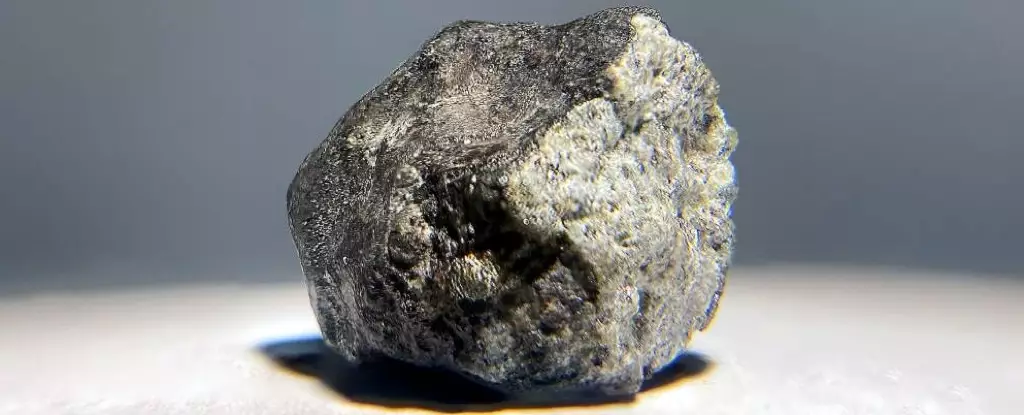Meteorites, the remnants of cosmic material that have found their way to Earth, have long piqued the interest of scientists. For many years, only a small number of these celestial objects could be traced back to their parent bodies in the vastness of space. However, a series of groundbreaking studies now claims to have mapped the origins of over 90 percent of meteorites, shedding light on their cosmic journeys and the violent histories from which they emerged.
The newfound insight stems from collaborative research conducted by leading institutions, including the French National Centre for Scientific Research, the European Southern Observatory, and Charles University in the Czech Republic. These studies concentrated on two predominant types of meteorites: high iron (H) chondrites and low iron (L) chondrites. Together, these two classes represent about 70 percent of all meteorites found on Earth. This important work not only identifies their parent bodies but also provides timelines for significant collision events in the main asteroid belt that connects Mars and Jupiter.
H and L chondrites are particularly fascinating due to their composition. Comprised predominantly of chondrules—small, round particles formed from molten rock that cooled rapidly—these meteorites offer a snapshot of the early solar system. The research teams used advanced techniques to analyze the materials in these meteorites, revealing that they originated from three major asteroid families: Massalia, Karin, and Koronis. Each of these families has undergone significant collisions over the ages, contributing to the supply of meteorites that rain down on Earth today.
The significance of these explosions is underscored by their timing: major collisions in the Massalia family occurred approximately 466 million and 40 million years ago. In contrast, the Karin and Koronis families experienced their own catastrophic events around 5.8 million and 7.6 million years ago, respectively. The relatively recent break-up of these asteroid families plays a crucial role in reshaping our understanding of meteorite origins, suggesting that many of the meteoroids that strike our planet today are remnants of these much younger collisions.
The research provided multiple lines of supporting evidence, linking the meteorites to their origin. One particularly compelling indication is the presence of associated dust bands, which are remnants of the same cosmic debris that once surrounded these parent bodies. Additionally, the cosmic-ray exposure ages of H chondrite meteorites—essentially the time they spent in space before making contact with Earth—have also served as invaluable clues. These ages were analyzed in conjunction with the pre-atmospheric orbits of the meteorites, solidifying the hypothesis that the majority of meteorites originate from fewer asteroid families than previously anticipated.
The implications of this research extend beyond merely cataloging meteorite origins. It addresses fundamental questions regarding the life cycle of asteroid families themselves. When asteroids collide, they produce a multitude of smaller fragments that may escape the belt, thus increasing the likelihood of subsequent collisions. Such dynamics help to explain why meteorite impacts on Earth are more frequent today than one might initially assume.
In addition to mapping H and L chondrites, researchers ventured into examining less common types of meteorites, further extending the total number of accounted origins to over 90 percent. These less prevalent meteorites have been connected to additional asteroid families such as Veritas, Polana, and Eos. This broadened scope will undoubtedly enrich our comprehension of the solar system’s evolution and the intricate paths that meteorites traverse through space before landing on Earth.
As researchers continue their observational efforts, the prospects of learning more about meteorites appear promising. By piecing together the fragmented narratives associated with these celestial visitors, scientists not only expand our understanding of the origins of life on Earth but also glean important insights into our solar system’s history and future trajectory. The knowledge gleaned from these studies has the potential to inform planetary defense strategies and improve our understanding of how cosmic events can reshape celestial landscapes. In essence, the exploration of meteorite origins is a powerful tool for unlocking the mysteries of our universe.



Leave a Reply